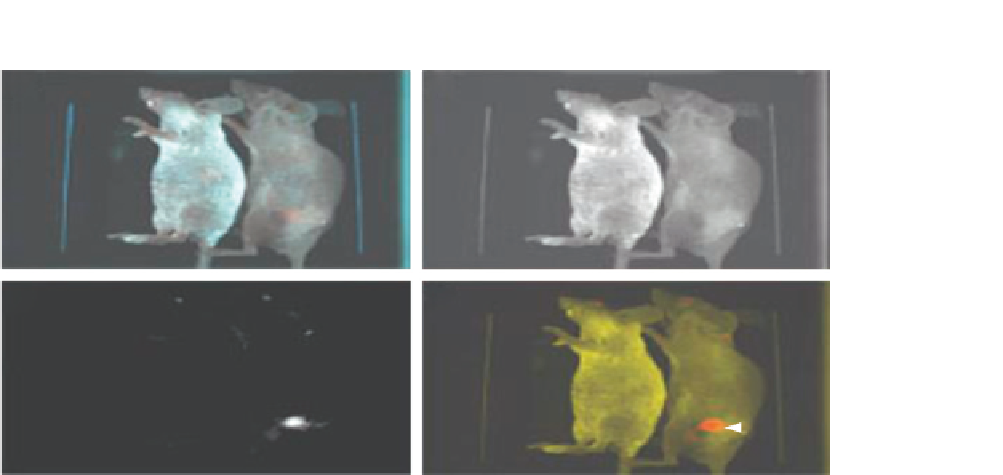Biomedical Engineering Reference
In-Depth Information
(A)
(B)
(C)
(D)
FIGURE 21.3
A light in dark places. Spectral imaging of quantum dots. White spot indicated with white arrow in 21.3D
indicate a prostate tumor growing in a live mouse
[4]
.
21.4.2.4 Regenerative Medicine
Nanotechnology will also play an important role in the field of regenerative medicine. This area is asso-
ciated with the use of pluripotent stem cells that can develop into other various types, so that could, at
least in theory, replace tissue destroyed by diseases such as diabetes, ischemic heart disease, Alzheimer's,
Parkinson's, spinal cord injuries, muscular dystrophy, retinal degeneration, and many more
[8]
.
21.4.3
Disease Prevention
21.4.3.1 Cardiovascular Interventions
It has been proposed that nanobots can also be used to prevent heart attack (cardiac failure) in the
future. Cardiac failure is caused by fat deposits blocking the blood vessels. Nanobots can be directed
to remove these fat deposits
[5]
.
Figure 21.4
shows the artists imagination of nanobots removing the
yellow fat deposits on the inner side of blood vessels.
While nano- and microparticle-based imaging of cardiovascular interventions is still in its devel-
oping phase, it has already presented the exciting potential to monitor primary interventional pro-
cedures for precise therapeutic delivery, enhance the effectiveness of delivered therapeutics, and
monitor therapeutic efficiency after interventions performed to treat cardiovascular diseases
[10]
.
21.4.3.2 Nanoparticles and the Blood-Brain Barrier: As Treatment Opportunity
Nanoparticles can be used as carrier systems to overcome the blood-brain barrier (BBB) and deliver
specific medications to regions of the brain that would normally be inaccessible. Their surfaces can
be coated with certain materials or manufactured such that they can bypass the BBB and transport



